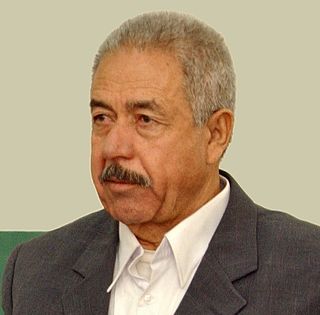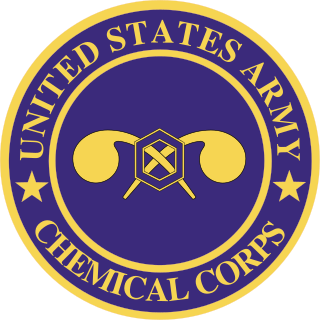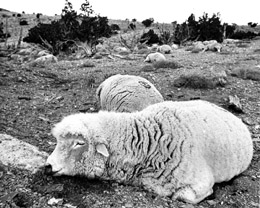External links
| General | |
|---|---|
| National libraries | |
| | This article about a scientific organization is a stub. You can help Wikipedia by expanding it. |
The Sunshine Project was an international NGO dedicated to upholding prohibitions against biological warfare and, particularly, to preventing military abuse of biotechnology. It was directed by Edward Hammond.
With offices in Austin, Texas, and Hamburg, Germany, the Sunshine Project worked by exposing research on biological and chemical weapons. Typically, it accessed documents under the Freedom of Information Act and other open records laws, publishing reports and encouraging action to reduce the risk of biological warfare. It tracked the construction of high containment laboratory facilities and the dual-use activities of the U.S. biodefense program. Another focus was on documenting government-sponsored research and development of incapacitating "non-lethal" weapons, such as the chemical used by Russia to end the Moscow theater hostage crisis in 2002. The Sunshine Project was also active in meetings of the Biological Weapons Convention, the main international treaty prohibiting biological warfare.
An announcement was posted on The Sunshine Project website, "As of 1 February 2008, the Sunshine Project is suspending its operations", due to a lack of funding. Its website remained online for some time after this date and could be used as an archive of its activities and publications from 2000 through 2008. However, as of October 2013 the Sunshine Project website was offline.
The Sunshine Project Biosafety Bites (v.2) #14 6 June 2006

Biological warfare, also known as germ warfare, is the use of biological toxins or infectious agents such as bacteria, viruses, insects, and fungi with the intent to kill, harm or incapacitate humans, animals or plants as an act of war. Biological weapons are living organisms or replicating entities. Entomological (insect) warfare is a subtype of biological warfare.

Chemical warfare (CW) involves using the toxic properties of chemical substances as weapons. This type of warfare is distinct from nuclear warfare, biological warfare and radiological warfare, which together make up CBRN, the military acronym for nuclear, biological, and chemical, all of which are considered "weapons of mass destruction" (WMDs), a term that contrasts with conventional weapons.
The term incapacitating agent is defined by the United States Department of Defense as:
Project Coast was a 1980s top-secret chemical and biological weapons (CBW) program instituted by the apartheid-era government of South Africa. Project Coast was the successor to a limited post-war CBW program which mainly produced the lethal agents CX powder and mustard gas; as well as non-lethal tear gas for riot control purposes. The program was headed by Wouter Basson, a cardiologist who was the personal physician of the then South African Prime Minister P. W. Botha.

The Biological Weapons Convention (BWC), or Biological and Toxin Weapons Convention (BTWC), is a disarmament treaty that effectively bans biological and toxin weapons by prohibiting their development, production, acquisition, transfer, stockpiling and use. The treaty's full name is the Convention on the Prohibition of the Development, Production and Stockpiling of Bacteriological (Biological) and Toxin Weapons and on their Destruction.

The United States is known to have possessed three types of weapons of mass destruction: nuclear weapons, chemical weapons, and biological weapons. The U.S. is the only country to have used nuclear weapons in combat, when it detonated two atomic bombs over the Japanese cities of Hiroshima and Nagasaki during World War II. It had secretly developed the earliest form of the atomic weapon during the 1940s under the title "Manhattan Project". The United States pioneered the development of both the nuclear fission and hydrogen bombs. It was the world's first and only nuclear power for four years (1945–1949), until the Soviet Union managed to produce its own nuclear weapon. The United States has the second-largest number of nuclear weapons in the world, after the Russian Federation.

Israel is widely believed to possess weapons of mass destruction, and to be one of four nuclear-armed countries not recognized as a Nuclear Weapons State by the Non-Proliferation Treaty (NPT). The US Congress Office of Technology Assessment has recorded Israel as a country generally reported as having undeclared chemical warfare capabilities, and an offensive biological warfare program. Officially, Israel neither confirms nor denies possessing nuclear weapons.

From the 1960s to the 1990s, South Africa pursued research into weapons of mass destruction, including nuclear, biological, and chemical weapons under the Apartheid regime. Six nuclear weapons were assembled. South African strategy was, if political and military instability in Southern Africa became unmanageable, to conduct a nuclear weapon test in a location such as the Kalahari desert, where an underground testing site had been prepared, to demonstrate its capability and resolve—and thereby highlight the peril of intensified conflict in the region—and then invite a larger power such as the United States to intervene.

Beginning in the mid-1930s, Japan conducted numerous attempts to acquire and develop weapons of mass destruction. The 1943 Battle of Changde saw Japanese use of both bioweapons and chemical weapons, and the Japanese conducted a serious, though futile, nuclear weapon program.

In violation of the Geneva Protocol of 1925, the Iraqi Army initiated two failed and one successful (1978–1991) offensive chemical weapons (CW) programs. President Saddam Hussein (1937–2006) pursued the most extensive chemical program during the Iran–Iraq War (1980–1988), when he waged chemical warfare against his foe. He also used chemicals in 1988 in the Al-Anfal Campaign against his civilian Kurdish population and during a popular uprising in the south in 1991.

The Chemical Corps are the branch of the United States Army tasked with defending against chemical, biological, radiological, and nuclear (CBRN) weapons. The corps was founded as the U.S. Chemical Warfare Service (CWS) during World War I. Its name was changed to the Chemical Corps in 1946. For most of its history, the Chemical Corps was tasked with delivering chemical weapons rather than defending against them.
The United States biological weapons program began in 1943 and was discontinued in 1969.

The Dugway sheep incident, also known as the Skull Valley sheep kill, was a March 1968 sheep kill that has been connected to United States Army chemical and biological warfare programs at Dugway Proving Ground in Utah. Six thousand sheep were killed on ranches near the base, and the popular explanation blamed Army testing of chemical weapons for the incident, though alternative explanations have been offered. A report, commissioned by Air Force Press Officer Jesse Stay and first made public in 1998, was called the "first documented admission" from the Army that a nerve agent killed the sheep at Skull Valley.

Project 112 was a biological and chemical weapon experimentation project conducted by the United States Department of Defense from 1962 to 1973.

The Deseret Test Center was a U.S. Army operated command in charge for testing chemical and biological weapons during the 1960s. The Deseret was headquartered at Fort Douglas, Utah, a former U.S. Army base.
The "Statement on Chemical and Biological Defense Policies and Programs" was a speech delivered on November 25, 1969, by U.S. President Richard Nixon. In the speech, Nixon announced the end of the U.S. offensive biological weapons program and reaffirmed a no-first-use policy for chemical weapons. The statement excluded toxins, herbicides and riot-control agents as they were not chemical and biological weapons, though herbicides and toxins were both later banned. The decision to ban biological weapons was influenced by a number of domestic and international issues.
Entomological warfare (EW) is a type of biological warfare that uses insects to interrupt supply lines by damaging crops, or direct harm to enemy combatants and civilian populations. There have been several programs which have attempted to institute this methodology; however, there has been limited application of entomological warfare against military or civilian targets, Japan being the only state known to have verifiably implemented the method against another state, namely the Chinese during World War II. However, EW was used more widely in antiquity, in order to repel sieges or cause economic harm to states. Research into EW was conducted during both World War II and the Cold War by numerous states such as the Soviet Union, United States, Germany and Canada. There have also been suggestions that it could be implemented by non-state actors in a form of bioterrorism. Under the Biological and Toxic Weapons Convention of 1972, use of insects to administer agents or toxins for hostile purposes is deemed to be against international law.

Allegations that the United States military used biological weapons in the Korean War were raised by the governments of People's Republic of China, the Soviet Union, and North Korea. The claims were first raised in 1951. The story was covered by the worldwide press and led to a highly publicized international investigation in 1952. Secretary of State Dean Acheson and other American and allied government officials denounced the allegations as a hoax. Subsequent scholars are split about the truth of the claims.
The Biological and Chemical Defence Review Committee, or BCDRC is a civilian body having oversight of the Canadian military's activities in the area of defence against biological and chemical warfare.
The United States biological defense program—in recent years also called the National Biodefense Strategy— refers to the collective effort by all levels of government, along with private enterprise and other stakeholders, in the United States to carry out biodefense activities.